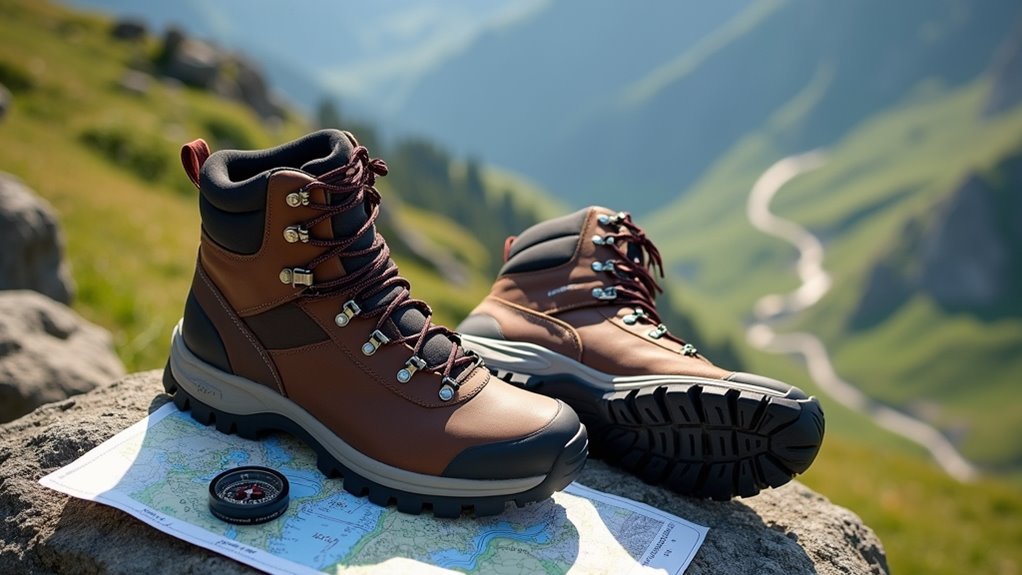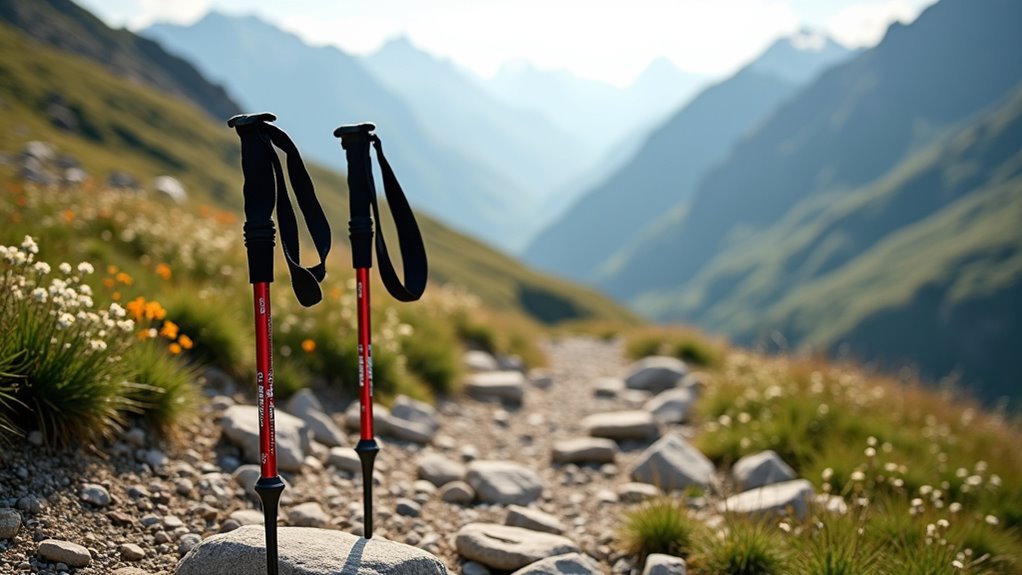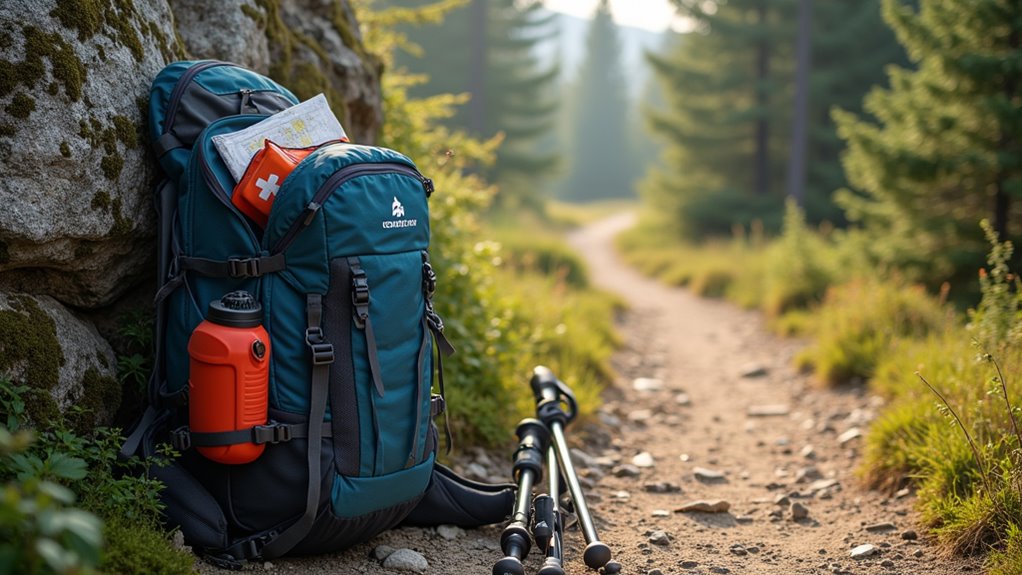To pick hiking boots for your next backpacking adventure, consider your terrain and pack weight first. For rugged or muddy trails with heavy loads, choose boots with stiffer soles, deep-lug outsoles, and high-cut uppers for ankle support. Prioritize durability with full-grain leather or synthetic materials for lighter, quicker trips. Make sure they fit well, leaving room for toe movement, and allow ample break-in time to prevent blisters. You’ll find guidance on advanced features and fit options next.
How do you choose the right hiking boots for your next adventure? Start by considering the materials. Full-grain leather is highly durable and water-resistant, making it suitable for challenging environments, but it’s heavier and less breathable than nylon combinations. In addition, comfort, lightweight, and suitability for conditions are key factors that should guide your decision when picking hiking footwear.
Split-grain leather, often paired with nylon, results in lighter, more breathable boots, though you’ll sacrifice some water resistance and long-term durability. Nubuck leather is flexible and water-resistant, but it demands a longer break-in period. Synthetic materials dry quickly, are lighter, less expensive, and break in faster, though they generally don’t last as long as leather options. Proper fit is crucial, as it helps prevent injuries and ensures safety during hikes.
Boot type should match your expected terrain and pack weight. Category A boots, with flexible soles, are best for urban walks or easy trails. If you plan to hike moderate trails like the Camino de Santiago with a light pack, Category B boots provide the right balance of support and comfort.
For trekking trips requiring more stability, choose Category B/C. Category C boots offer stiff soles and are designed for rugged, uneven terrain with heavy packs. For mountaineering or glacier travel, Category D boots provide maximum stiffness and are compatible with crampons.
Examine boot upper design for both support and comfort. Higher uppers stabilize your ankles and help prevent injuries, especially on uneven ground or with a heavy load. Lower-cut boots offer more flexibility and are ideal for lighter, easier trails.
Look for mesh panels or perforations if you need extra breathability, but remember waterproof membranes like Gore-Tex or eVent, while valuable in wet conditions, may limit ventilation.
The soles matter, too. Flexible soles suit easy trails, while stiffer soles support your feet over rough terrain. Deep lugs on the sole improve traction in mud, whereas smoother tread is better on rocky surfaces. Vibram soles are a good choice for durability and grip.
Always try boots on at the end of the day to account for foot swelling, and ascertain a snug fit with room for toe movement. Breaking in new boots is critical, especially if you choose leather. Expect a break-in period of anywhere from a few days to several weeks depending on the material and how frequently you wear them. Proper fit and the right features guarantee comfort, support, and protection throughout your journey.









